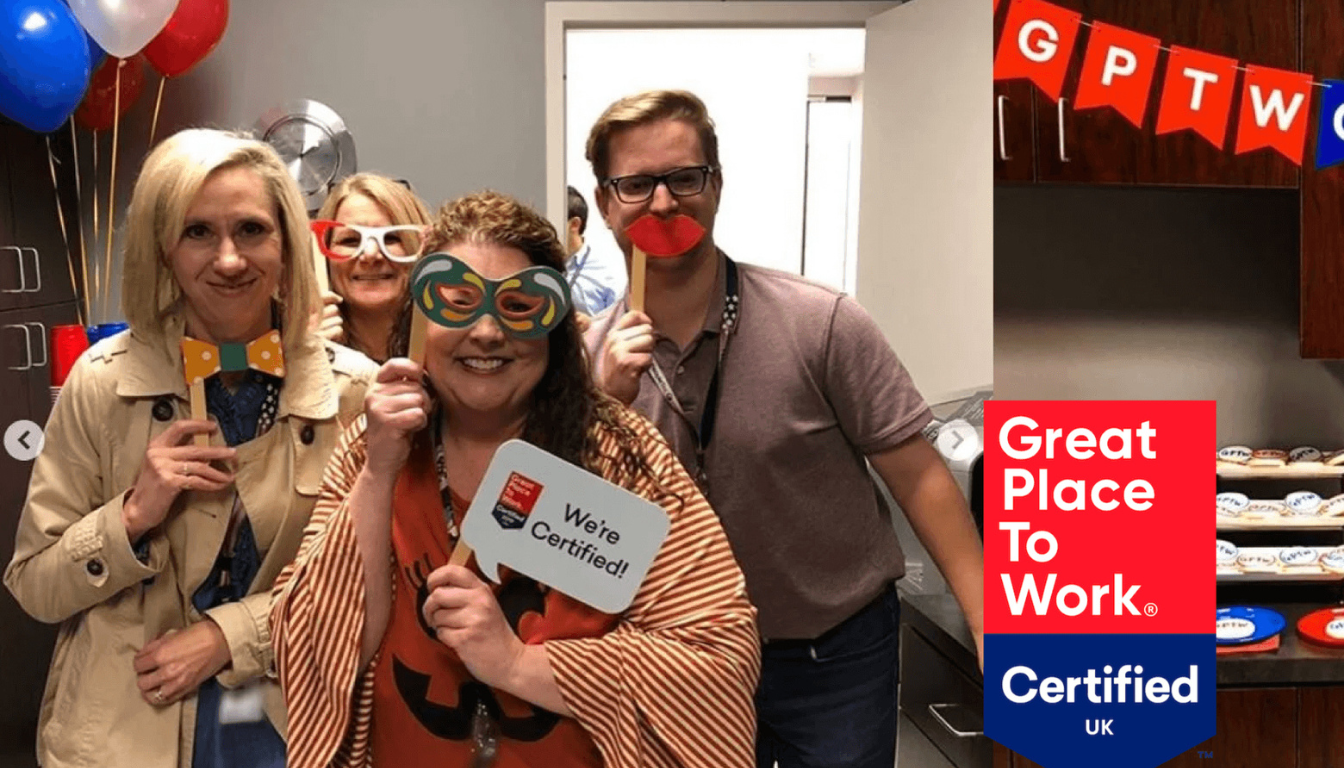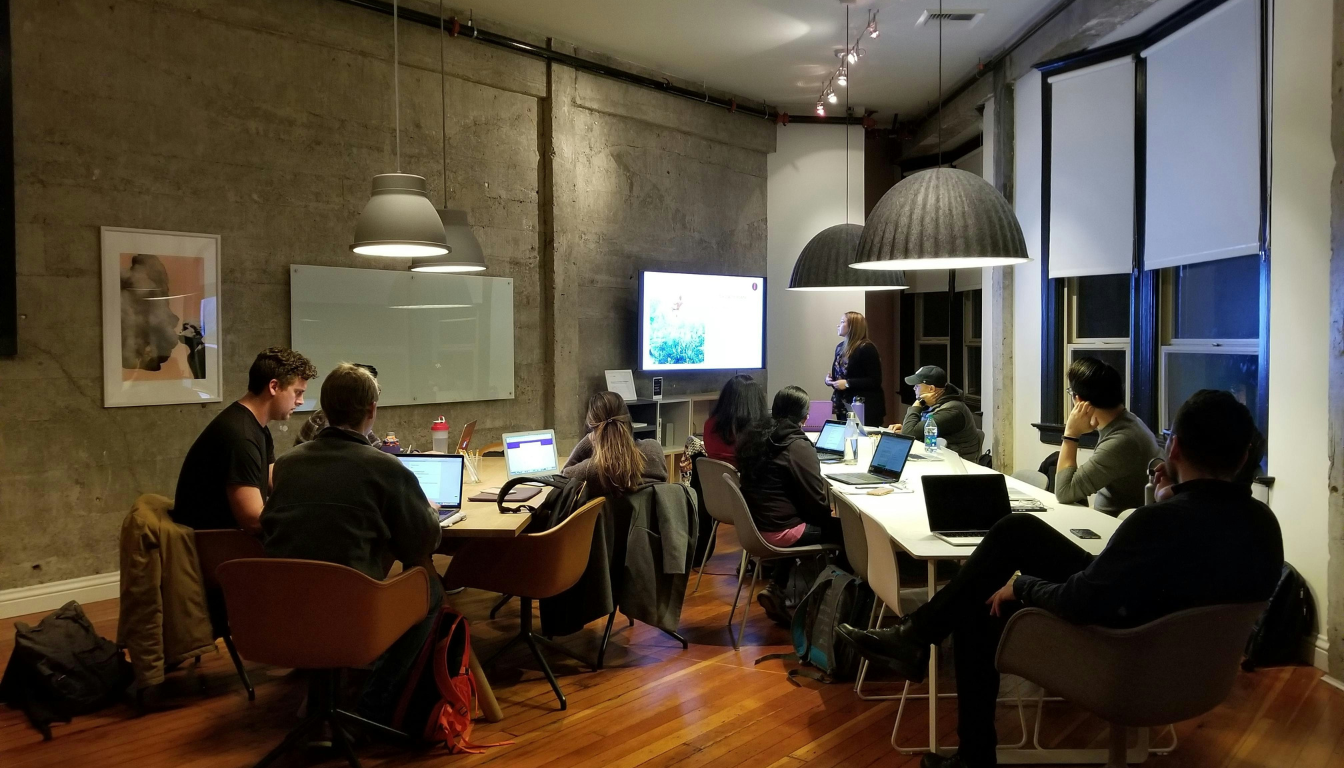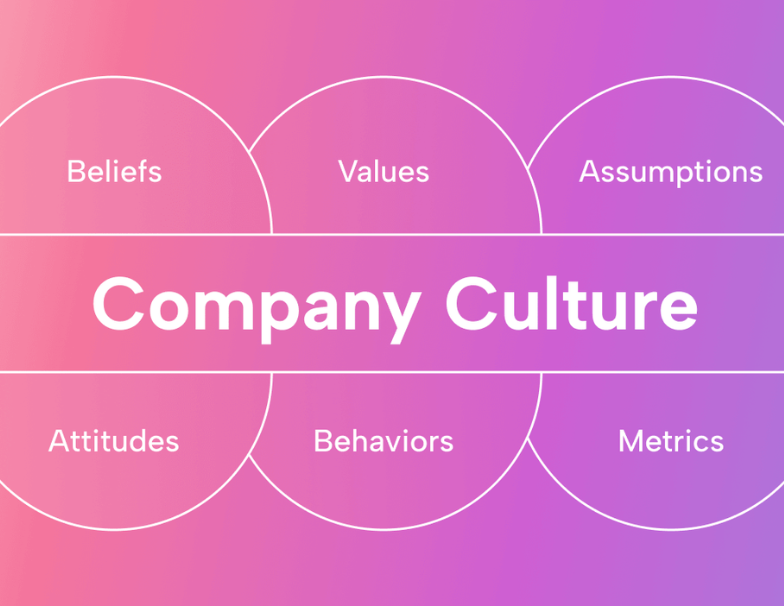How to Achieve Great Place to Work Certification: Key Steps and Benefits
.png)
Wondering what Great Place to Work Certification is and why it matters? This certification proves your company values a positive workplace culture, helping you attract and retain top talent. Read on to learn what it takes to achieve this recognition and its key benefits for your organization.
Key Takeaways
- Achieving Great Place to Work Certification reflects an organization’s commitment to creating a positive workplace culture that values inclusivity, trust, and employee engagement.
- Building trust through transparent communication and effective feedback mechanisms enhances collaboration and productivity, which are vital for a successful workplace environment.
- Continuous measurement and recognition of employee experiences, along with professional development opportunities, are essential for maintaining high employee satisfaction and retention.
Understanding Great Place to Work Certification

The Great Place to Work Certification recognizes companies that create a positive work atmosphere. It also signifies that these organizations meet certain standards for employee experience. The certification process evaluates key traits and experiences that define a great workplace. Achieving this certification demonstrates a company’s dedication to fostering a culture where employees feel valued, supported, and motivated.
A great workplace ensures employees feel they belong, are valued, supported, and motivated. Inclusivity and diversity are key features of a positive workplace culture, ensuring that everyone feels part of the team and has the opportunity for meaningful work. The certification encompasses key metrics and evaluations that highlight the company’s ideal workplace qualities, encouraging ongoing evaluation of employee satisfaction.
What is a Great Place to Work Certification?
Great Place to Work Certification signifies independent proof of a superior employee experience. The certification process involves the Trust Index Survey, which gathers honest feedback from employees about their proud workplace experiences.
Tracking progress through success metrics enables organizations to evaluate the effectiveness of their initiatives and adjust strategies accordingly. This continuous assessment helps companies maintain a high standard of organizational culture.
Importance of Certification
Obtaining the certification can lead to increased employee retention, as it creates a trustworthy and engaging work culture. Companies recognized as great workplaces often experience better recruitment metrics, including higher offer acceptance rates. This certification not only enhances the company’s reputation but also attracts top talent, contributing to long-term success and sustainability.
Building Trust Within Your Organization

Obtaining the certification demonstrates a company’s commitment to building trust, reflecting a strong workplace culture. Organizations that prioritize trust experience increased collaboration and overall productivity. Building trust within your organization starts with transparent communication and effective employee feedback mechanisms.
Core values guide employee behavior and decision-making, aligning them with organizational goals. Aligning an organization’s core values with its practices can attract potential employees who resonate with the company’s mission.
Trust forms the foundation of a positive workplace culture, fostering a supportive and engaging environment. Companies increasingly turn to thoughtfully designed team experiences—such as those offered through platforms like Offsite—to deepen employee connections, reinforce shared values, and sustain trust beyond the day-to-day workplace setting.
Transparent Communication
Open and honest communication contributes significantly to building trust and a sense of safety among employees. Transparent communication earns trust and commitment to solving problems and achieving goals. Leaders who clearly communicate their clear vision can significantly improve team alignment and motivation through clear communication.
Open communication and respecting employee feedback are essential for effective management.
Employee Feedback Mechanisms
Frequent surveys gauge employee engagement and provide insights into workplace satisfaction. Analyzing survey results helps organizations identify specific areas needing improvement in the employee experience through research.
Activities like ‘Paper Tower’ and ‘Blind Retrieval’ foster communication and trust through collaborative problem-solving. Opportunities for skill enhancement and career advancement increase employee engagement and retention.
Fostering Connection Among Employees

Building connections and camaraderie in the workplace creates a supportive environment and enhances employee satisfaction. Embedding core values into daily operations improves collaboration and overall morale among employees. These connections ultimately contribute to a positive workplace culture that aligns with the principles of Great Place to Work Certification.
Acknowledgment of individual contributions fosters a culture of appreciation and respect, which can enhance overall job satisfaction. Employee recognition programs can significantly enhance teamwork and collaboration within an organization.
Creating a sense of community where employees feel supported by their colleagues is crucial for building a great workplace.
Team-Building Activities
Team-building activities boost employee morale and create a more enjoyable workplace. Team-building exercises outside the office enhance relationships and promote camaraderie.
Offsite retreats offer a distraction-free setting for employees to bond, foster creativity, and collaborate on future goals. Such retreats improve teamwork and creativity, fostering relationship-building outside the traditional workspace.
Offsite Retreats
Offsite retreats offer teams a relaxed environment to enhance communication and relationships. Offsite retreats are effective for deepening employee connections by providing a relaxed environment free from daily work pressures.
Professional planning services can enhance the effectiveness of these retreats.
Aligning Core Values With Company Practices
Aligning practices with core values enhances workplace culture and promotes employee engagement. A strong alignment between a company’s core values and its practices fosters a unified and genuine corporate culture. Reflecting core values in operations fosters employee engagement and loyalty.
Strong alignment between practices and core values fosters a genuine culture that enhances satisfaction and loyalty. This alignment is crucial for creating a positive work environment where employees feel valued and motivated.
Defining Your Company's Core Values
Core values shape a company’s mission and identity, guiding employee behavior and decision-making. Visionary leaders unify teams around a common focus and ensure everyone understands their role, fostering shared values.
Clearly defined core values help employees align their actions with the company’s values, mission, and goals.
Integrating Values Into Daily Operations
Integrating core values into daily operations ensures actions reflect the mission and reinforce a positive culture. Organizations should regularly measure key performance indicators that align with their core values.
Reviewing success metrics regularly ensures practices evolve in alignment with core values, fostering continuous improvement.
The Role of Strong Leadership in Certification
Engaged leadership involved in daily operations and responsive to questions enhances workplace engagement. Effective leadership is crucial for creating a positive workplace atmosphere that encourages open communication and trust. Strong leadership is crucial for certification, as leaders set the tone for the organization’s culture and practices.
Leadership that emphasizes a positive company culture enhances employee commitment and motivation. Effective leaders foster a culture of trust and enhance employee motivation.
Visionary Leadership
Visionary business leaders demonstrate confidence, effectiveness, and fairness, earning employee appreciation. Successful leaders exhibit transparency, approachability, empathy, integrity, and fairness. Visionary leaders visualize future possibilities and guide teams towards innovation. Great leaders guide their teams towards achieving these goals, making them effective leaders in their fields.
Leaders should admit they don’t know everything and encourage new ideas-sharing, fostering psychological safety.
Supportive Management Practices
Management practices that empower and recognize employees lead to higher job satisfaction. Management that respects employee autonomy and fosters decision-making leads to higher job satisfaction. Treating employees like adults and respecting their feedback are essential for effective management.
Such management practices strengthen business culture and promote employee growth and satisfaction.
Enhancing Employee Experience Through Professional Development

Career growth opportunities, such as training programs and promotions, enhance employee satisfaction. Regular feedback discussions align employee expectations with company goals, fostering a high-performing culture. Flexible work arrangements improve productivity and enhance morale, allowing for better work-life balance.
Wellness programs lower healthcare costs and improve productivity, further supporting work-life balance. Professional development is essential for a workplace where employees feel valued and motivated.
Career Growth Opportunities
Productivity, satisfaction, and long-term commitment are key benefits in a great workplace environment. Job satisfaction and employee retention are immediate benefits provided by training programs. Great companies prioritize the development of their employees. They implement training programs to enhance performance.
Provide comprehensive programs with responsibilities and advancement opportunities to develop employee growth.
Mentorship Programs
Mentorship programs foster knowledge sharing and professional growth through structured relationships between experienced employees and those seeking guidance. Mentorship programs provide personalized support to enhance skills, job satisfaction, and career progression.
Promoting Work-Life Balance

Promoting work-life balance is crucial for well-being and can lead to a 21% more profitable workforce. Rest and recovery prevent overwork and burnout. Innovative companies can promote work-life harmony through flexible work hours, paid time off, and well-being initiatives. Engaging with external support services can lead to cost reductions while simultaneously enhancing workplace culture.
Work-life balance enhances well-being and contributes to overall job satisfaction and productivity. Encouraging a healthy work life balance creates a positive culture where employees feel valued and supported.
Flexible Work Schedules
Policy guidelines like unlimited PTO, paid family leave, work-from-home flexibility, and a four-day workweek promote flexible schedules for workers. Flexible schedules help employees work jobs balance their personal and professional lives.
Accommodating personal needs through flexible work arrangements improves job satisfaction, reduces turnover, and enhances productivity.
Wellness Programs
Wellness initiatives positively impact mental and physical health, contributing to a balanced work-life experience. Wellness programs lower healthcare costs and improve productivity, further supporting work-life balance.
Measuring and Celebrating Success
Supporting work-life balance increases overall job satisfaction. Encouraging work-life balance improves satisfaction and retention. Measuring progress towards certification helps identify areas for improvement and ensures a successful workplace culture.
Celebrating progress towards certification encourages ongoing employee engagement and motivation. Regular surveys and acting on feedback cultivate a positive workplace culture that aligns with employees’ needs and expectations.
Regular Surveys and Feedback Loops
The Trust Index Survey enables companies to compare results to benchmarks, offering insight into performance relative to peers. Regular surveys measure employee engagement and satisfaction, helping identify strengths and areas for improvement.
Regular surveys and acting on feedback help cultivate a positive workplace culture that aligns with employees’ needs and expectations.
Recognition and Rewards
Employee recognition boosts morale, drives engagement, and increases productivity. Recognizing contributions empowers employees and motivates continued excellence. Recognition and rewards can be formal appreciation programs or informal acknowledgment.
Valuing employee contributions is essential for a supportive management environment that values employees.
Leveraging External Support Services
External support services offer expert planning and execution that contribute to achieving certification. Offsite, for example, offers curated venues that suit teams’ needs. Their services include expert speakers and facilitators, group travel planning, event production, unique experiences, and personalized gifts. These services help save time, money, and stress while enhancing the overall employee experience.
Offsite supports organizations in strengthening culture through thoughtfully planned company retreats and team experiences. This not only improves communication within organizations but also cultivates an environment that defines what makes a company a great place to work. Using these services can significantly improve workplace culture and employee satisfaction.
Planning Effective Team Retreats
Professional planning services enhance the effectiveness of team retreats. Professional planners create engaging activities and manage logistics, leading to more effective outcomes.
Team retreats foster relationships and build a positive workplace culture. Well-planned retreats improve team dynamics, boost morale, and strengthen company culture, making them worthwhile.
Cost Savings and Benefits
Qwick offers quality healthcare options and employee-designed benefits to improve overall experience. Qwick pays employees at the 60th percentile of the market, ensuring competitive compensation. Regularly reviewed compensation at Qwick helps maintain employee satisfaction and trust.
Financial benefits enhance workplace culture by offering support beyond standard salary structures.
Summary
Achieving Great Place to Work Certification requires a deliberate and comprehensive approach that includes building trust, fostering connections, aligning core values, and promoting work-life balance. Each of these elements plays a crucial role in creating a supportive and engaging work environment. By understanding and implementing these key steps, companies can transform their company culture, leading to increased employee satisfaction and retention.
In conclusion, a certified great place to work is not just about achieving a status but about committing to continuous improvement and employee well-being. The journey towards certification can lead to a more motivated, productive, and loyal workforce. Aspiring to achieve this certification can inspire positive change and growth within an organization, making it a desirable place for current and future employees. In support of these goals, some organizations have found value in incorporating curated team experiences—such as those facilitated by Offsite.com—to help reinforce culture, promote connection, and enhance overall workplace engagement.
FAQs
- What is the Great Place to Work Certification?
The Great Place to Work Certification is an esteemed recognition that identifies organizations committed to creating a positive workplace culture and achieving key benchmarks in employee experience. This certification underscores a company’s dedication to fostering a supportive and engaging environment for its employees.
- How does transparent communication help build trust in the workplace?
Transparent communication fosters trust and safety among employees by promoting openness and collaboration, ultimately encouraging commitment to problem-solving and goal achievement.
- Why are offsite retreats beneficial for employee relationships?
Offsite retreats are beneficial for employee relationships as they create a relaxed environment for teams to connect, fostering communication and enhancing team dynamics. This ultimately boosts morale and strengthens interpersonal bonds.
- What role do external support services play in achieving Great Place to Work Certification?
External support services are crucial for achieving Great Place to Work Certification as they provide expert planning and execution of initiatives, such as team retreats, that enhance employee experience and workplace culture. These services help create an environment that fosters employee satisfaction and engagement.
You may also like
Unique spaces for your next offsite
Find distinctive venues for your upcoming corporate retreat.
Stay Updated with Our Insights
Get exclusive content and valuable updates directly to you.







